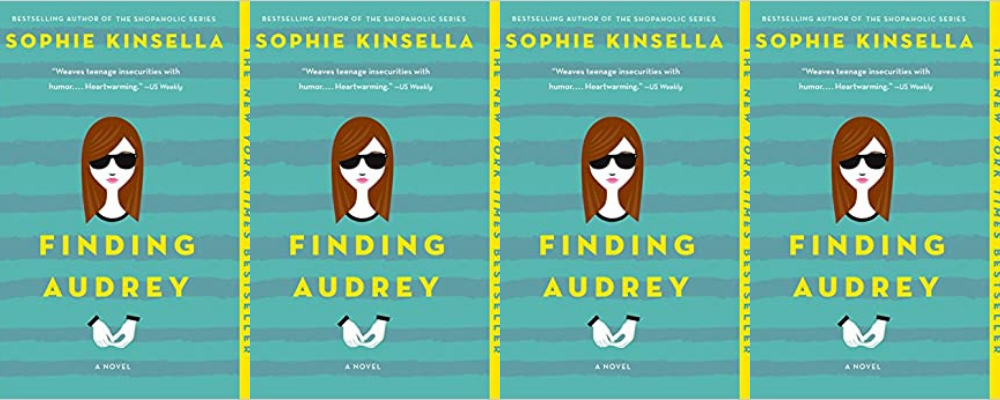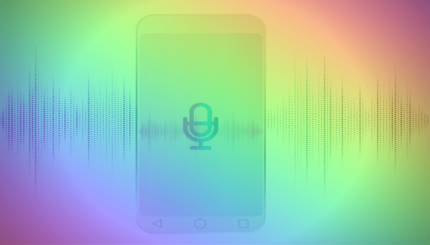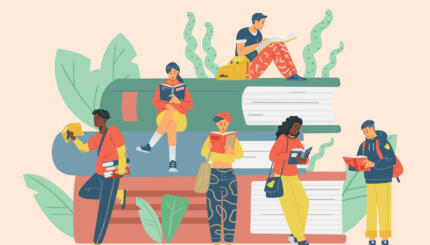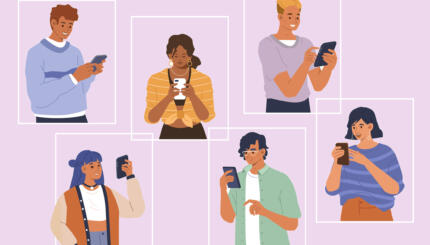I’ve always looked at books as a form of comfort. Nothing is more comforting than seeing yourself in a character and realizing you’re not alone in your experiences or emotions. That’s one of the reasons it’s so important that mental health is represented accurately in literature. Also, experts point to representations of mental illness in the media as a way to destigmatize it and foster empathy in unaffected teens.
With that in mind, here are five YA books that depict mental illness, and what I think about them.
Disclaimer: My analyses of these books are based entirely on my own experiences with anxiety and depression. It’s okay if they don’t speak to you; your experiences and emotions are still valid.
Some spoilers ahead!
Finding Audrey by Sophie Kinsella
Mental Health Rating: 7/10
Overall Rating: 6/10
Sophie Kinsella’s Finding Audrey follows 14-year-old Audrey, a girl with debilitating social anxiety. Finding Audrey was the first book I ever read that depicted social anxiety. As someone who had been struggling with social anxiety for years—albeit less intensely—it was a really emotional experience to read this book. Audrey was funny and thoughtful, and she put my feelings into words. To this day, I’ve incorporated Audrey’s lizard brain terminology in conversations about my own anxiety. It was also gratifying to see Audrey in a romantic relationship, because it gave me hope that someone could love me, too, one day.
A few years after I first read Finding Audrey, I decided to come back to it with a more nuanced and mature understanding of mental illness. My second read didn’t quite live up to my own memory. Besides literary issues like unrealistic, one-dimensional characters, the way Kinsella wrote the climax of the novel almost made it seem like Audrey’s romantic relationship cured her anxiety, which is an unhealthy, unrealistic idea to teach vulnerable teens. In a case as extreme as Audrey’s, she’d likely need a combination of therapy and medication to start recovering, so Kinsella’s portrayal felt disingenuous, and could contribute to the pressure felt by teens in relationships to cure or be cured of mental illness by their partner.
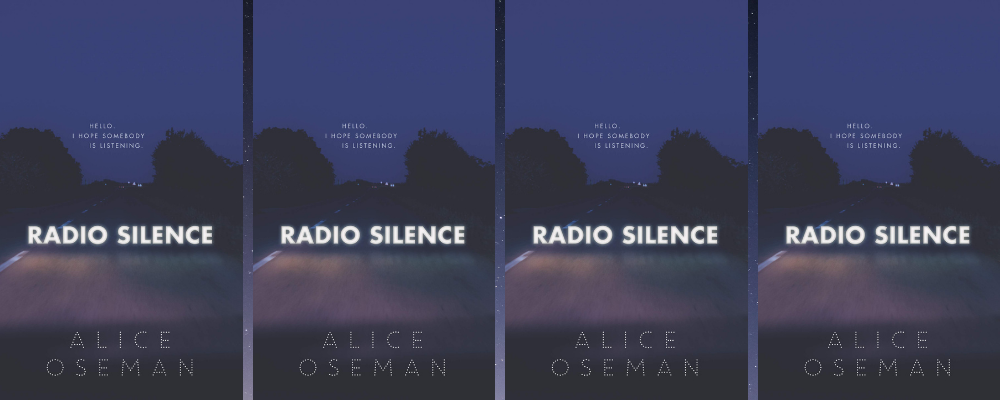
Radio Silence by Alice Oseman
Mental Health Rating: 10/10
Overall Rating: 10/10
Alice Oseman’s Radio Silence explores what it means to discover yourself while featuring incredible diversity and a friendship that made my heart sing. Frances Janvier, the protagonist, is a quirky girl struggling to define herself outside of the academic pressure and external expectations she perceives. Frances’s best friend, Aled Last, struggles with depression and forming relationships, due in part to the abuse he suffers at the hands of his mother. This love-letter to creation depicts imposter syndrome, existential crises, the difficulty of supporting depressed friends, and the connection/toxicity duality of internet culture—all in a way that feels genuine and natural. Radio Silence is a moving story about becoming yourself.
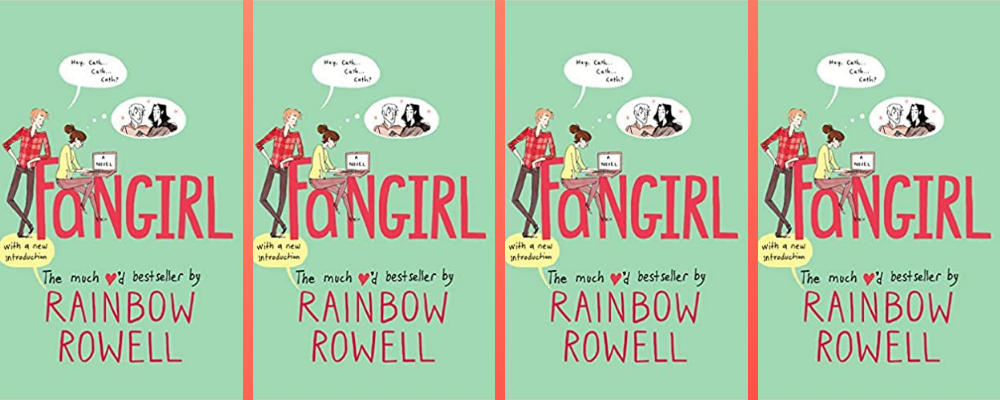
Fangirl by Rainbow Rowell
Mental Health Rating: 5/10
Overall Rating: 6.5/10Rainbow Rowell’s Fangirl is probably the most well-known book on this list. It’s a slice-of-life look at Cath, the protagonist, who is a fanfiction writer adapting to college life. One thing that stood out to me about this book was the scarily accurate passages depicting Cath’s socially anxious thought processes. However, at certain points in the book, Cath acts out of character for someone established to suffer from anxiety—for instance, when she gets called into her professor’s office, instead of stressing that she did something wrong and would be reprimanded, she jumps to the irrational conclusion that she’s been chosen to participate in an advanced course. She’s also a bit immature—she rolls her eyes a lot like a stereotypical pre-teen—whereas (at least in my own and in my friends’ experiences) people suffering from anxiety tend to be more mature and self-aware. I was also frustrated by Rowell’s depiction of fandom. For someone like Cath, the community had the potential to be such a support network, but Rowell doesn’t tap into that at all. Ultimately, I think I’d categorize this book as a coming-of-age novel, more than an exploration of mental health.
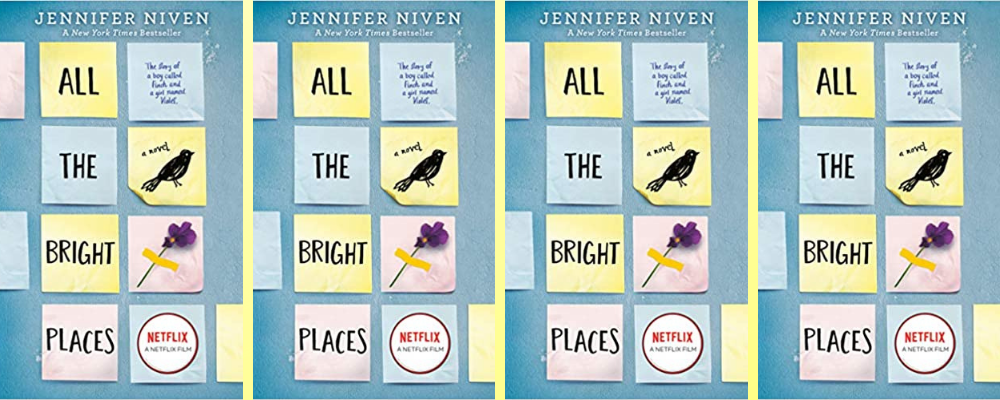
All the Bright Places by Jennifer Niven
Mental Health Rating: 6/10
Overall Rating: 7.5/10
CW: suicide
Jennifer Niven’s All the Bright Places is about life and death and Violet and Finch. Violet and Finch are depressed and suicidal, but together, they learn to find beauty in the world and to turn existing into living. This book made me feel intensely and made me think deeply. It was a brutal, raw, and gut-wrenching read.
All that being said, I have some significant problems with the book, number one being that it often seems the characters have no substance to them outside of their depression, a dangerous message to send to depressed teens who may already feel scared that their illness defines them. Furthermore, there is significant suicidal glorification, which makes sense considering that the protagonists are suicidal, but it can easily be triggering to readers. Ultimately, while I’m hesitant to accuse Niven of capitalizing on depression, this book seems like it was written for those who’ve never been suicidal or experienced depression. While books like this— books that educate and destigmatize mental health—are important, it’s also important for depressed teenagers to see hope for themselves in representative literature.
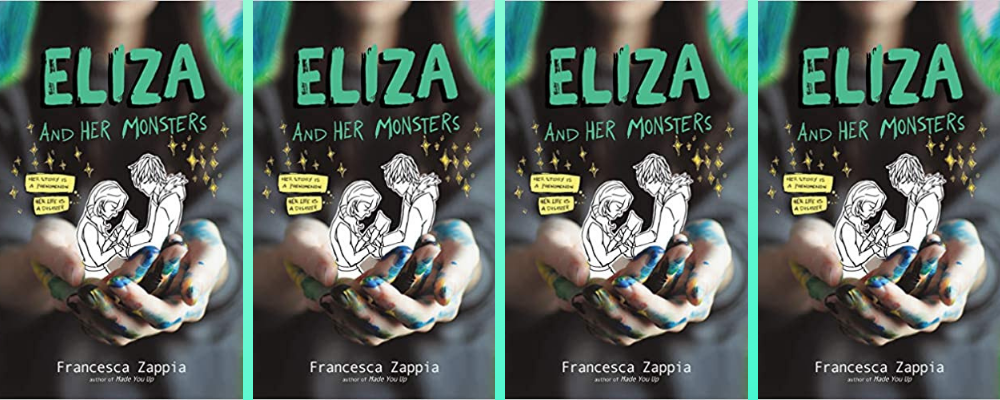
Eliza and Her Monsters by Francesca Zappia
Mental Health Rating: 10/10
Overall Rating: 9,503,2579,873/10
*deep breath* Okay. Okay. Francesca Zappia’s Eliza and Her Monsters is spectacular. Seriously. Like, I’ve read it seven times already and it made me cry every single time. Here’s why I think it’s awesome:
Eliza Mirk, the main character. She’s sarcastic and creative and awkward and really, really talented—she is more than her anxiety (but her anxiety is there, and crazy realistic).
Eliza’s parents. They mean well, but they don’t really understand Eliza. A lot of that is Eliza’s own fault, because she’s closed off and doesn’t want to explain everything to parents she (rightfully) thinks won’t get it. Zappia does a great job at portraying the complexity of such a nuanced relationship, depicting the problems without laying blame.
Eliza’s friends. Max and Emmy are so supportive and just really great people.
Wallace. Wallace Warland, Eliza’s eventual boyfriend, is selectively mute and goes through his own transformation. He and Eliza grow together. They’re also a super cute couple.
Monstrous Sea. Eliza is the creator of the popular webcomic Monstrous Sea. Its story is a fascinating subplot, and the parallels between the monsters in her comic and the monstrosity of mental illness, while not necessarily subtle, were really cool.
The fandom. In Eliza and Her Monsters, fandom is shown to be a community, a place to meet like-minded people and form deep friendships.
The anxiety arc. There is no magic cure. Instead, Zappia illustrates the fine line between an outlet and an avoidance tactic. Eliza experiences progress and experiences setbacks—just like in real life. Zappia portrays therapy as something positive and helpful, instead of stupid or pointless like so many contemporary authors do. Most of all, though, I love that the book ended on a hopeful note. Eliza’s not done. She still has a lot more to go in her recovery, but she’s getting there, and that was something I needed to see.
It’s rare to find a book that makes you laugh and cry, that stays in your mind and heart long after you’ve read it. Eliza and Her Monsters was that book for me.




